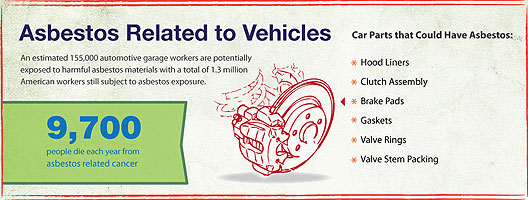Most people know some of the dangers that can be found within cars, even in modern cars today. Whether it is statistics on traffic accidents or pollutants coming out of the tailpipe, vehicles do receive a fairly large amount of negative attention.
What many drivers do not hear much about is some of the toxins that can be found within the vehicles themselves. New studies are being released regularly that outline a wide array of these toxic dangers, and it is something that every driver and car owner should be made aware of.
The first thing to understand is why these chemicals are used in vehicle manufacturing in the first place. Most uses of these toxic substances are inert and will never affect the driver or the passengers within the vehicles.
Chemicals such as bromine and arsenic can be deadly if ingested or inhaled and are occasionally used in some of the wiring or within seat cushions themselves. Due to the nature of these materials, it would be nearly impossible for anyone within a vehicle to even come into contact with these chemicals, much less ingest or inhale them.
Another major reason for using these chemicals is to make otherwise flammable products flame retardant. This happens quite a bit in the industry for devices that humans come into close contact with such as the seat covers, flooring, and child safety seats.
There are quite a few federal and international regulations against what chemicals can be used, but many manufacturers still opt for persistent, bioaccumulative toxics, or PBTs. These toxins have almost no affect on the human body if contact is only made for a short period of time however they can become problematic for those that are spending an increased amount of time within their automobiles.
Another major area of concern is within the engine compartment and other working parts of the vehicle.
Due to the fact that humans rarely come into contact with the engine and all its supporting components, much more leeway is given to manufacturers in what chemicals can be used. One major concern, especially in older vehicles, is with asbestos.
Asbestos has been used worldwide to create brake pads, shoes, clutch plates, and other friction products. There has been a direct link between overexposure to these components of a vehicle and cancers such as mesothelioma.
For the average driver, most are not going to get into their vehicle, only to collapse from a flood of toxic chemicals. For those that have spent extended amounts of time within their car, restore classic vehicles, or are mechanics by trade, these alarming reports should be of concern and lead to some changes of habit.
You can read more of Brian’s work on the dangers of asbestos here
